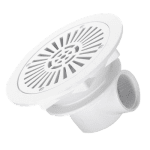Swimming pool design guide
Designing a swimming pool involves careful consideration of various factors to create a functional, aesthetically pleasing, and safe environment for recreation and relaxation. Whether for residential or commercial purposes, a well-designed pool enhances the overall appeal of the property while providing a space for exercise, social gatherings, and leisure activities. Here’s a comprehensive guide to swimming pool design, covering key aspects from planning and layout to materials, features, and considerations for different settings.
Planning and Preparation (Swimming pool design guide)
- Site Assessment:
- Location: Choose a suitable location based on sunlight exposure, privacy, accessibility, and integration with existing landscape features.
- Space Availability: Measure available space to determine pool size, shape, and orientation.
- Regulations: Check local building codes, zoning ordinances, and safety regulations governing pool construction.
- Purpose and Functionality:
- Intended Use: Determine the primary use of the pool (e.g., lap swimming, recreation, children’s play).
- User Demographics: Consider the age group, number of users, and specific needs (e.g., safety features for children, accessibility for elderly).
- Design Concept and Style:
- Architectural Integration: Align the pool design with the overall architecture and style of the property (e.g., modern, traditional, Mediterranean).
- Aesthetic Preferences: Choose a design style (e.g., geometric, freeform, naturalistic) that enhances the property’s visual appeal and complements outdoor spaces.
Design Elements and Features (Swimming pool design guide)
- Pool Shape and Size: (Swimming pool design guide)
- Geometric Shapes: Rectangular, oval, and polygonal shapes offer simplicity and elegance, suitable for modern and formal settings.
- Freeform Designs: Organic shapes with curves and irregular contours mimic natural ponds or lagoons, creating a relaxed and naturalistic atmosphere.
- Depth and Gradient: (Swimming pool design guide)
- Depth Variations: Plan different depth zones to accommodate various activities (e.g., shallow areas for lounging, deeper sections for diving or lap swimming).
- Gradient: Ensure a gradual slope for safety and accessibility, avoiding sudden drops or steep transitions.
- Materials and Finishes: (Swimming pool design guide)
- Pool Shell: Common materials include concrete, fiberglass, and vinyl, each offering distinct advantages in terms of durability, customization, and maintenance.
- Interior Finishes: Options include tiles, plaster, aggregate, and pebble finishes, chosen for their aesthetic appeal, durability, and comfort.
- Water Features and Enhancements:
- Waterfalls and Fountains: Adds a decorative element and soothing sound, enhancing the pool’s ambiance.
- Spa and Hot Tubs: Integrated spa areas for relaxation and hydrotherapy benefits.
- Vanishing Edge (Infinity Edge): Creates a dramatic visual effect by overflowing water over one or more edges, ideal for properties with scenic views.
- Safety and Accessibility:
- Fencing and Barriers: Install safety barriers such as fences, gates, and alarms to prevent unauthorized access and enhance child safety.
- Handrails and Steps: Provide easy entry and exit points with sturdy handrails and non-slip steps or ladders.
- Depth Markings: Clearly indicate water depths with visible markings to guide swimmers and ensure safety.
Practical Considerations (Swimming pool design guide)
- Water Circulation and Filtration: (Swimming pool design guide)
- Filtration System: Select an efficient filtration system (e.g., sand, cartridge, DE filters) to maintain water clarity and hygiene.
- Pumps and Skimmers: Ensure adequate water circulation and debris removal to prevent stagnation and maintain water quality.
- Heating and Lighting: (Swimming pool design guide)
- Heating Systems: Consider options such as solar, gas, or electric heaters to extend the swimming season and enhance comfort.
- LED Lighting: Install energy-efficient LED lights for nighttime visibility and ambiance, with color-changing options for aesthetic appeal.
- Landscaping and Surroundings: (Swimming pool design guide)
- Pool Decking: Choose materials like concrete, stone, or wood for pool surrounds and decks, considering durability, slip-resistance, and aesthetic harmony.
- Vegetation and Shade: Integrate landscaping elements such as plants, trees, and pergolas to provide shade, privacy, and natural beauty around the pool area.
- Maintenance and Sustainability:
- Water Conservation: Implement water-saving practices through covers, efficient filtration, and monitoring water levels.
- Energy Efficiency: Opt for energy-efficient equipment and lighting systems to reduce operational costs and environmental impact.
- Creating the perfect swimming pool requires careful planning and consideration. A well-designed pool not only enhances your outdoor space but also provides a refreshing retreat for family and friends. Here’s a comprehensive swimming pool design guide to help you through the process, ensuring you make informed decisions every step of the way.
- 1. Determine Your Goals
- Before diving into the design process, outline your goals. Consider how you intend to use the pool—whether for recreation, exercise, or relaxation. This will guide your design choices, including size, shape, and features.
- 2. Choose the Right Location
- Selecting the ideal location for your pool is crucial. Look for a spot that receives ample sunlight, as this will keep the water warm and enjoyable. Ensure there is enough space for poolside amenities like loungers, umbrellas, and a patio. Additionally, consider privacy and the view from your house when deciding on the location.
- 3. Select Pool Shape and Size
- The shape and size of your pool should reflect your personal style and available space. Common shapes include rectangular, oval, and freeform designs. Rectangular pools are great for lap swimming, while freeform pools provide a more natural look. Ensure the size accommodates your intended use while allowing for surrounding features.
- 4. Consider Materials and Finishes
- Choosing the right materials for your pool is essential for both aesthetics and durability. Common materials include concrete, fiberglass, and vinyl. Each has its pros and cons, so consider factors like maintenance, cost, and lifespan. For finishes, consider options such as tiles, plaster, or pebble for a textured surface.
- 5. Plan for Safety
- Safety is paramount when designing a pool. Install safety features like fencing, pool covers, and alarms to prevent accidents. Additionally, consider non-slip surfaces around the pool area to reduce the risk of falls.
- 6. Integrate Landscaping
- Landscaping plays a significant role in the overall design of your pool area. Incorporate plants, flowers, and trees to create a serene environment. Consider adding elements like rock formations, waterfalls, or lighting to enhance the ambiance.
- 7. Incorporate Additional Features
- Enhancing your pool with features such as spas, waterfalls, and lighting can elevate the experience. Swim-up bars, built-in seating, and fire pits also add to the fun and relaxation.
Conclusion (Swimming pool design guide)
Designing a swimming pool involves a blend of artistic vision, technical expertise, and practical considerations to create a space that enhances property value and lifestyle. By carefully planning the layout, selecting appropriate materials, incorporating safety features, and considering environmental factors, you can create a swimming pool that meets your aesthetic preferences, functional needs, and operational requirements. Whether for a private residence, resort, or community facility, a well-designed pool enhances outdoor living spaces, promotes wellness, and provides a refreshing retreat for users to enjoy leisure activities and social gatherings.


















